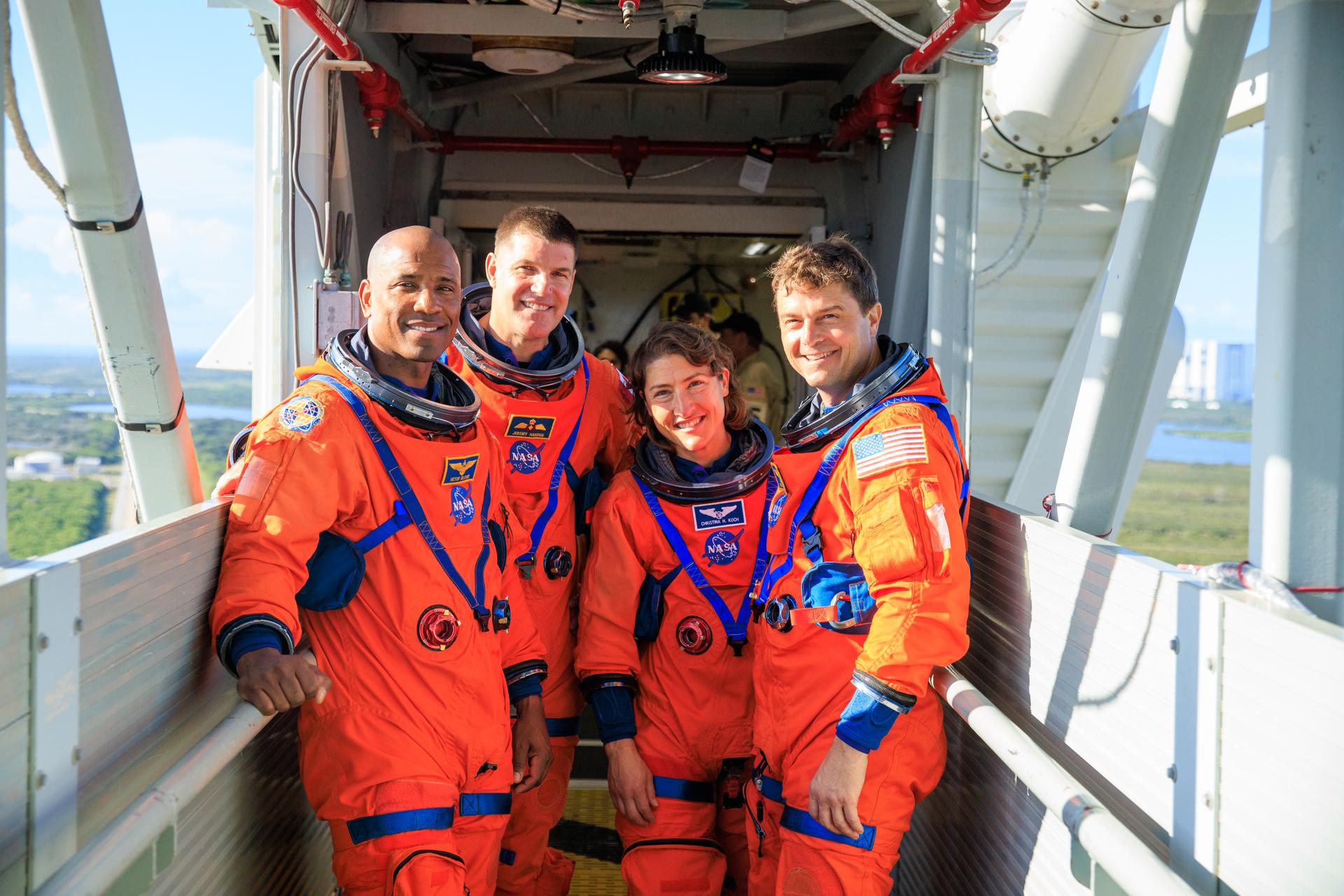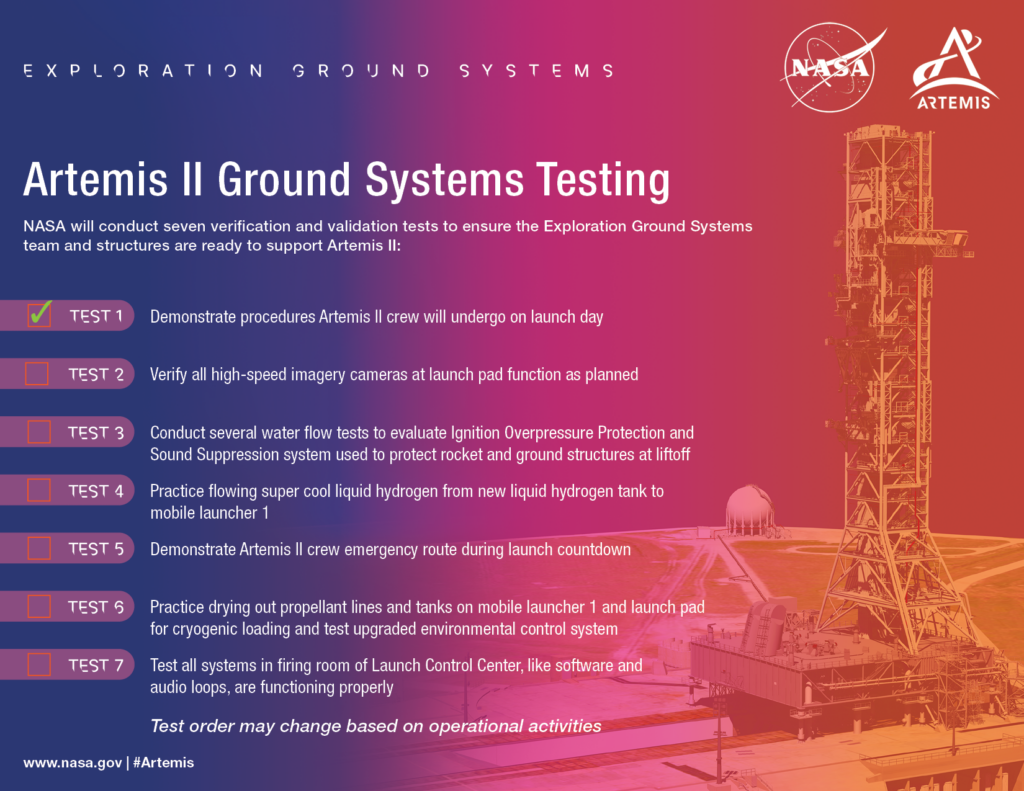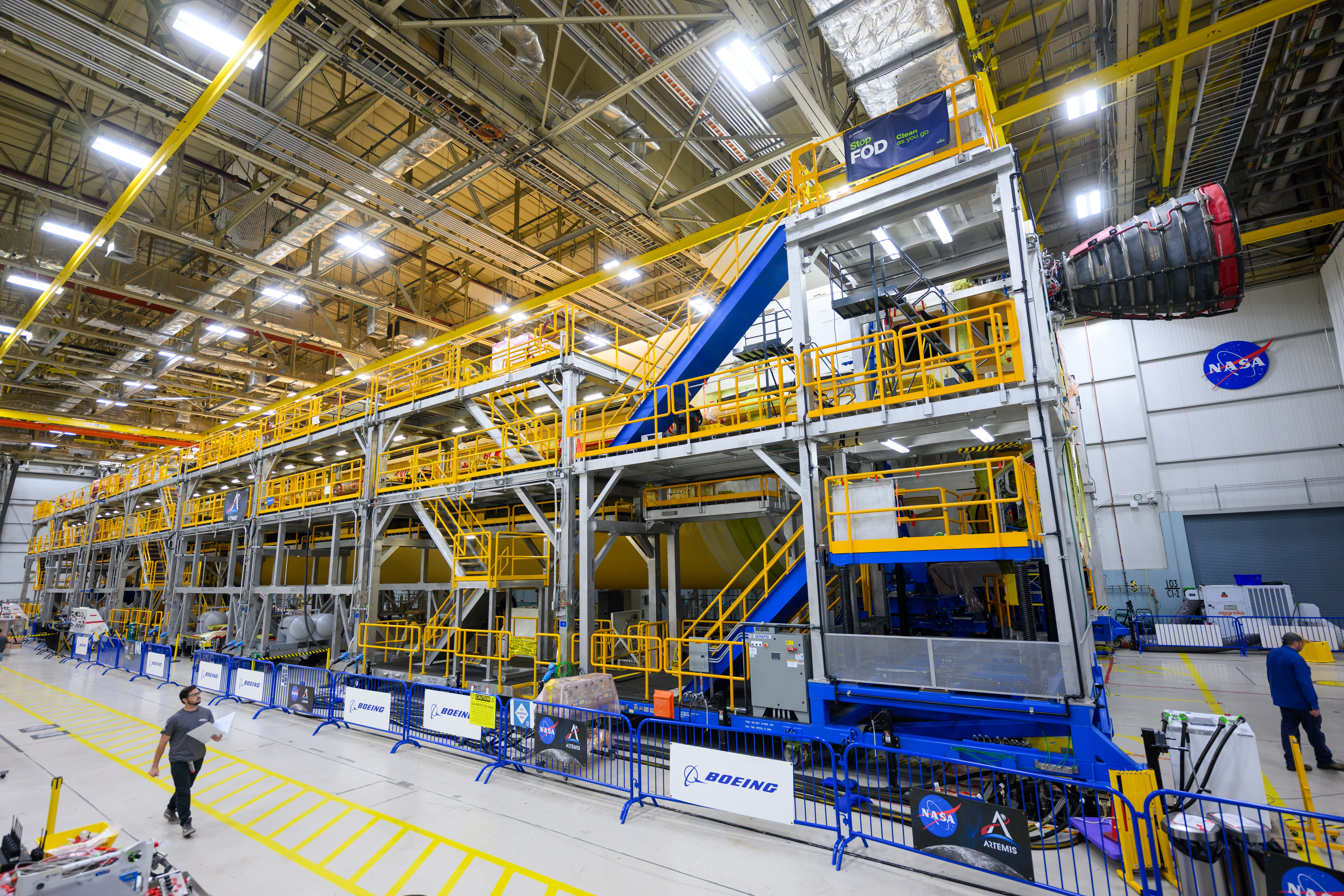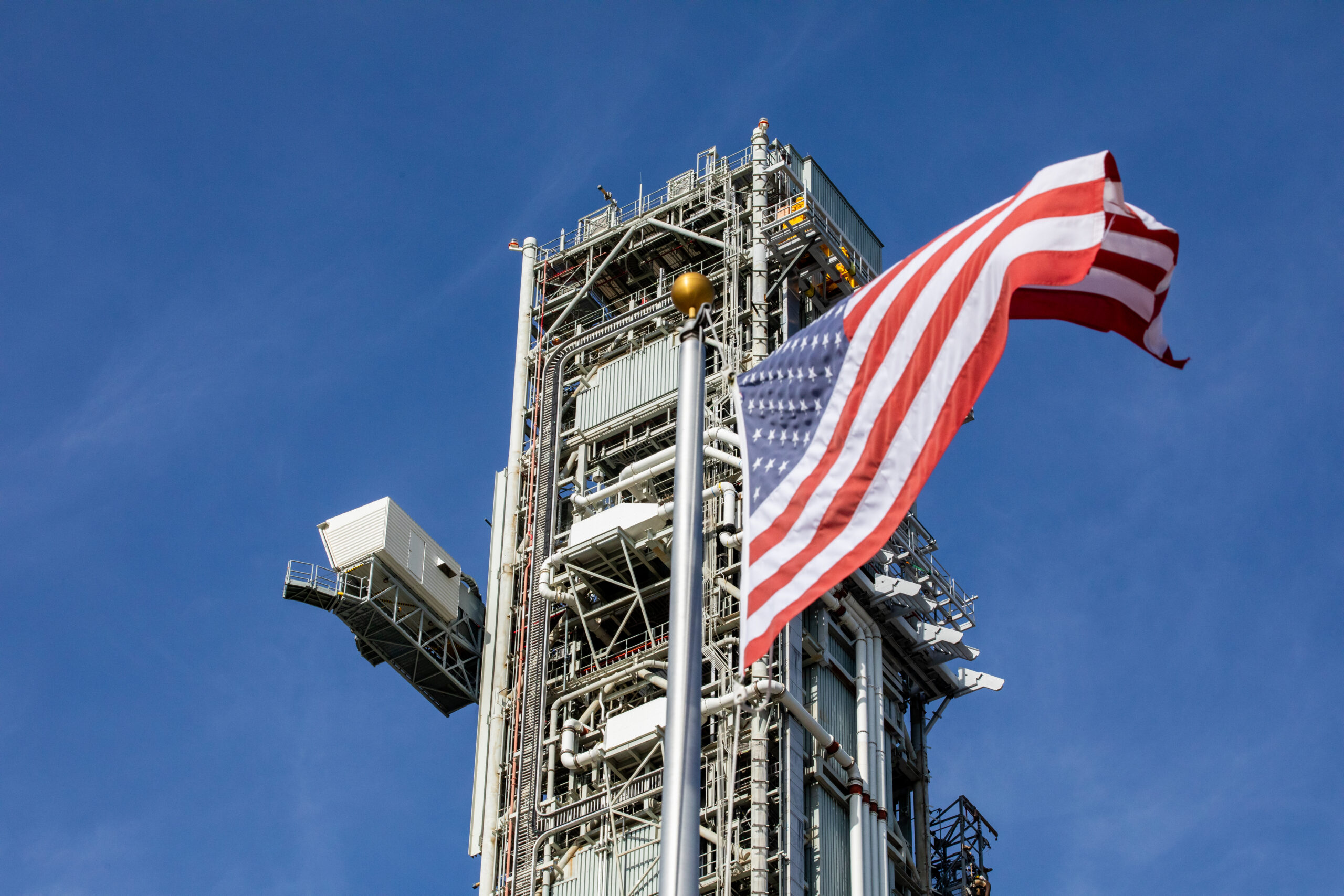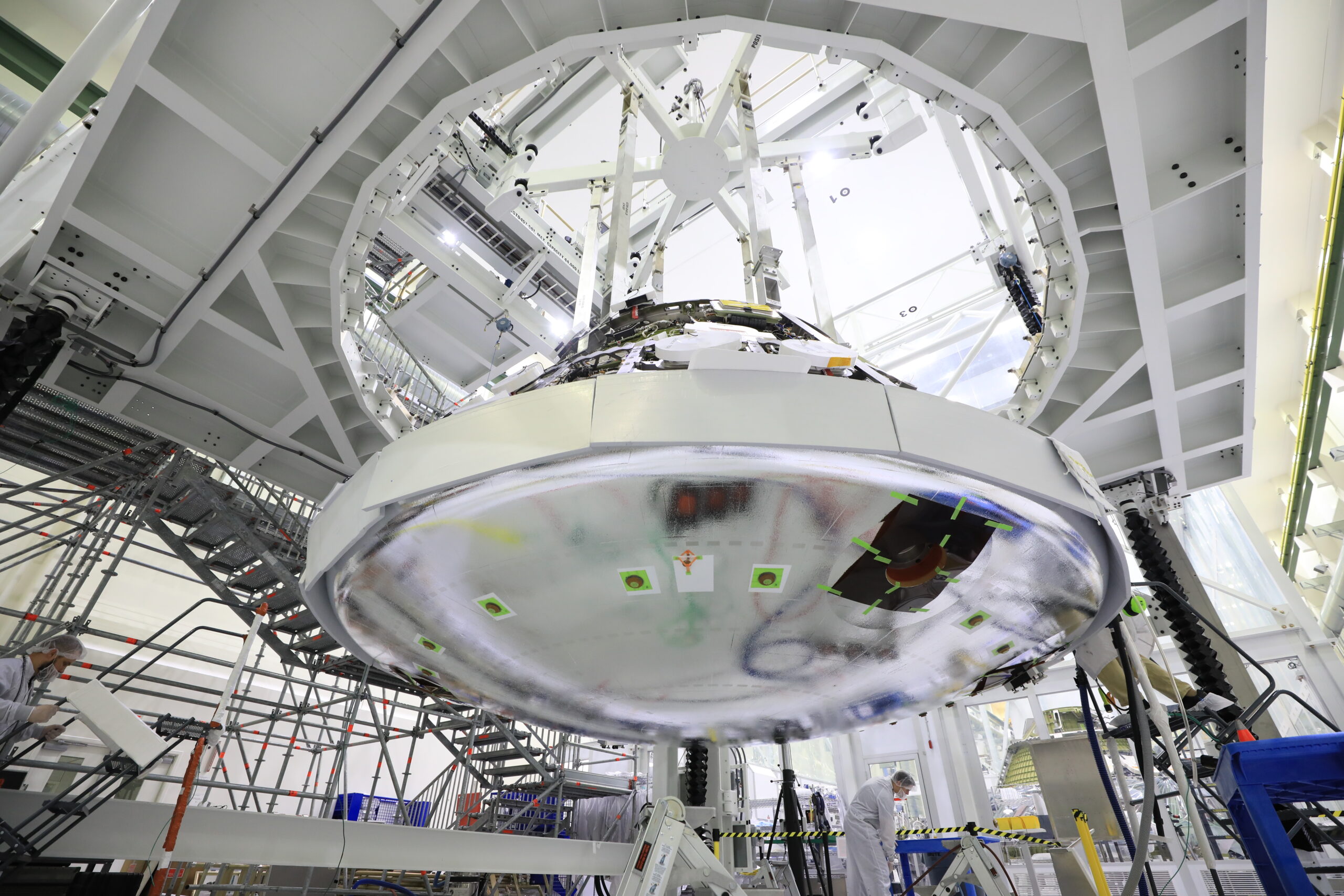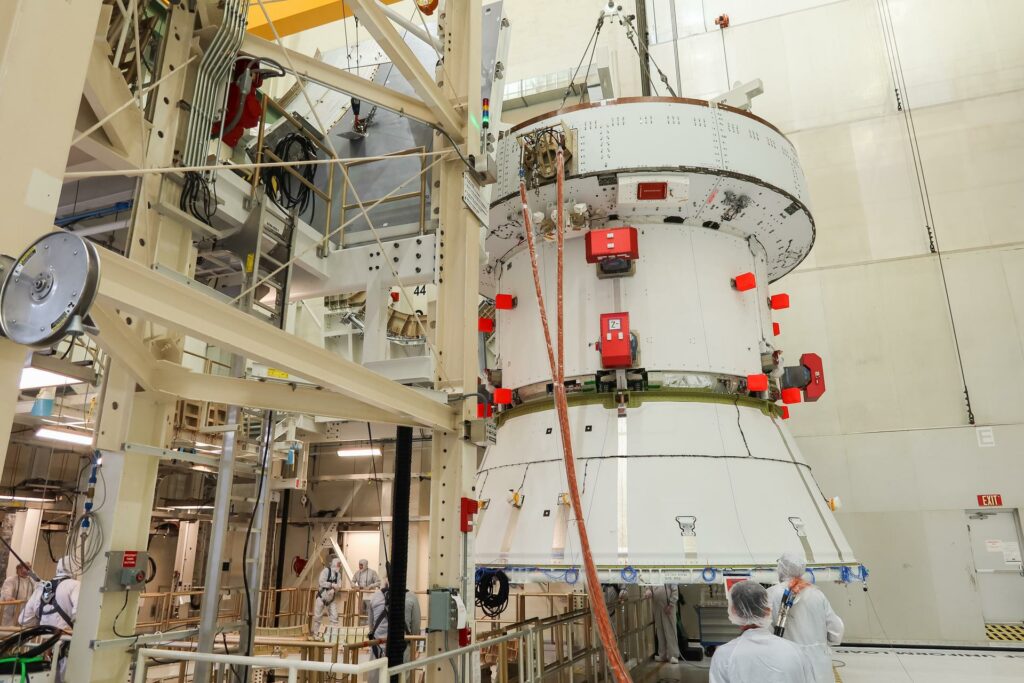
Teams with NASA’s Exploration Ground Systems Program have completed the next series of integrated ground systems testing at the agency’s Kennedy Space Center in Florida. On Jan. 25, the high-speed film and high-speed digital cameras on the mobile launcher and Launch Pad 39B were successfully tested at the spaceport ahead of the Artemis II mission.
Following Artemis I, teams updated the 68 high-speed cameras, which start during the final 12 seconds of the countdown to provide views of the rocket and surrounding ground structures during launch. The imagery also is used in detailed post-launch analysis.
The updates on the cameras include:
- Software and procedures to ensure proper field of view of the rocket and spacecraft.
- High-speed digital camera firmware and digital recorder software to improve visual video quality.
- Optical control system software to ensure accurate setup.
- Upgraded faceplate purge hardware – a small tool near the camera lens that releases small amounts of gaseous nitrogen to remove any water that falls on the lenses.
During a water flow test to check the sound suppression system at the pad, teams tested these cameras by setting them up in a launch countdown configuration. The test verifies the cameras’ field of view and the upgraded faceplate purge hardware all function properly. In September 2023, teams at Kennedy and at NASA’s Marshall Space Flight Center in Huntsville, Alabama also tested the cameras during a hot fire test of the upgraded solid rocket booster design for the SLS (Space Launch System) rocket for future Artemis missions.
Personnel at Kennedy next will test the dynamic range of the cameras during a nighttime commercial rocket launch from a nearby launch site. Following each operation, teams will analyze the footage to ensure each camera performed as expected.


